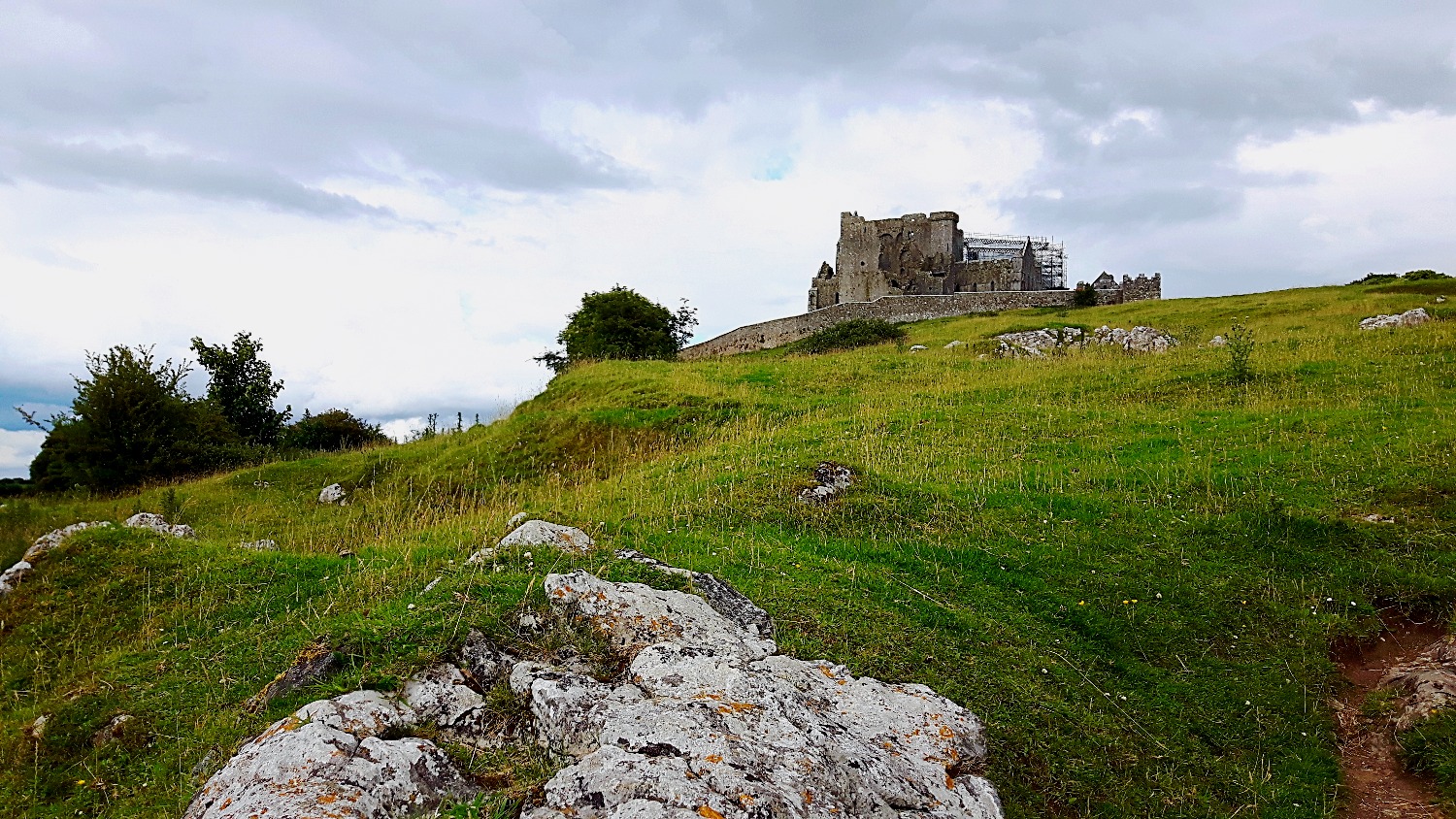The pastoral landscape intrigued me as a city of cobblestone never could. The grass seemed greener here. Perhaps it was the dew freshly drying in the cool morning breeze. The sheep seemed more pronounced here, dotting the landscape like seashells along a sandy beach. I could hear their soft bleating, carried along by the rolling hills. There was nothing outwardly unique about this horizon. It resembled many of the green fields I had seen along the Irish coast. But there was something about this particular view. Perhaps it was the massive stone castle that towered just behind me, the Rock of Cashel. Perhaps it was the six-foot tall wall that divided the graveyard in which I stood from the outlying farms. With my eyes, I followed a dirt path leading down a steep hill. I stood on tiptoes to see over, using a rain-washed gravestone carved in the shape of a Celtic cross as my balance. The names of the long deceased were no longer legible. They were faded lines of a forgotten human life and were now my stepping stool.
Following a whim, I crossed the graveyard and bypassed the castle, following the dirt path down the slope. I clambered over a short stone wall and stepped out onto the abandoned, paved street. I looked from left to right and saw nothing. I mounted a second wall along the opposite side of the road and slipped through a gash in the stone that had crumbled in years past. I dropped into the rocky pasture. The grass was less green now that I was closer, muffled by yellowish weeds and wilting flowers. Cattle huddled a way off, bits of long grass hanging from their lopsided, chewing mouths. They watched me with disinterest as I hopped over the various cow patties for the sake of my only pair of shoes. My destination was the Hore Abbey, which was framed by its own walls and contained remnants of an overgrown garden overcast by a massive oak tree. The Abbey was not well kept like the Rock of Cashel. It did not have a visitor’s center. It did not have black plaques inscribed with gold writing to give tell of a story of this wall, or that sculpture. There were bits of garbage and rusted tin Coca-Cola cans littering the ground. There was evidence of youthful endeavors within the walls: spray-painted graffiti, a buried campfire, and a half-empty tube of lip-gloss. Despite the modern scatterings, there was a certain beauty to the Abbey. Though the roof had long ago caved in and the walls were rubble, there was one circular window at its peak that cast a pale but beautiful light on the opposite wall. The wall had been carved with a heart and the letters “C + B”. I wondered vaguely if the two were still together. Perhaps that would justify the vandalism. I looked on and saw a remarkable piece to the structure of the Abbey that remained intact. The dome of one of the ceilings, with the spires reaching to a pinnacle, cast outward to form a star-like structure. I looked up at the star and could not help but wonder why I was so drawn to it. Was it meant to be the star that led the wise men? Or was it simply an act of engineering to keep the building aloft? After all, it had persevered thus far. There was a peacefulness to the simple Abbey despite its being cast aside. It was secondary to a grander structure, but to me it was essential.
As I left the Abbey I looked up, and standing tall and bold in the growing sunlight was the Rock of Cashel. In that view I could imagine it as a formidable fortress crafted to stand boldly on its plateau, overlooking the surrounding landscape with a sense of ownership that the Abbey never proclaimed. The Abbey was humble in comparison, and yet I liked it more. Still, it was not where people surrounded.



